In November 1889, the young army officer Felicíssimo do Espírito Santo Cardoso handed a dismissal letter to Dom Pedro II and conducted the Emperor to the ship that would carry him into exile. That act was more symbolic of the change from monarchy to republic than Field Marshal Deodoro’s cry of “Long live the Republic!” The change was, however, limited to the departure of the Emperor and the inauguration of a field marshal as president. The new regime did not transform the aristocracy into a republican society, and Brazil continued divided between a privileged minority and the scorned masses. We proclaimed the Republic but did not construct it. The elected presidents were members of a republican aristocracy, and they continued governing for it. They were not elected from the people and for the people. Our Republic was more unequal than the empire had been, more unequal than any monarchy. Royal families resemble their people more than our governing officials and their families resembled the Brazilian people.”
– Cristovam Buarque, Brazilian Senator and Economist
Buenos Aires – It’s been a very long time since I even hinted at my Paint By Numbers scheme of touring odd spots in town. A week or so ago I simply decided one day to resume it with a wander down the street 15 de Noviembre de 1889, the date that Brazil was, officially anyway, turned from an empire into a republic. At least, I’m assuming that that was the seminal event for naming this street – nothing in domestic history here caught my eye as a likely candidate, and it seems an auspicious enough event to have had a street named after it. 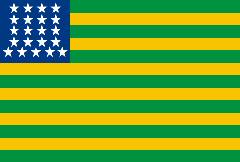 The street runs from the barrio of Parque Patricios, nearly at the park itself, right into the heart of barrio Constitución, in fact, ending right at the back of the main train station there, interestingly, in a nerdy sort of way, parallel to Av. Brasil, just two blocks away, for its entire length. In the course of checking out the history of various things, I discovered a probably not well known bit – for a four day period, starting on November 15, 1889, the first four days of Brazil’s existence as a republic, they used this “imitation United States” flag based on their own colors, and then promptly reinstituted a redesigned version of the earlier empire’s flag.
The street runs from the barrio of Parque Patricios, nearly at the park itself, right into the heart of barrio Constitución, in fact, ending right at the back of the main train station there, interestingly, in a nerdy sort of way, parallel to Av. Brasil, just two blocks away, for its entire length. In the course of checking out the history of various things, I discovered a probably not well known bit – for a four day period, starting on November 15, 1889, the first four days of Brazil’s existence as a republic, they used this “imitation United States” flag based on their own colors, and then promptly reinstituted a redesigned version of the earlier empire’s flag.
On to the tour… the street starts, or at least the end I started at the corner of Catamarca, in front of the huge Instituto Felix Fernando Bernasconi, a school which takes up two blocks on a side, some great archictectural details which, unfortunately, I wasn’t able to enter the grounds to get good shots of, and far more statuary than most schools tend to have. From there, the street starts off as a residential one, mostly two-story, one-family homes, which only stretches for a short four blocks. At that point, on one side we hit the old Caseros prison, which is being torn down – in fact if you check the link there to Wikipedia, you’ll see that a huge amount of work in demolition has been done in comparison to my photo below; and on the other side, the Garraham hospital, a public pediatric hospital, which seems to be a mix of some renovated modern bits and some truly rundown wings that at first glance, as you’ll see, I thought were simply occupied by squatters – apparently not. After this several block stretch, the neighborhood turns predominately residential again, with a bit of commercial, and a mix of homes and apartment buildings, also noticeably more rundown as I headed into Constitución. And finally, after a mere 16 blocks, ends at the back of the train station.
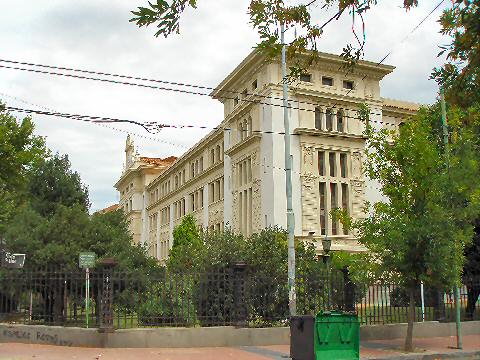
The start of my walk at the massive Instituto Felix Fernando Bernasconi
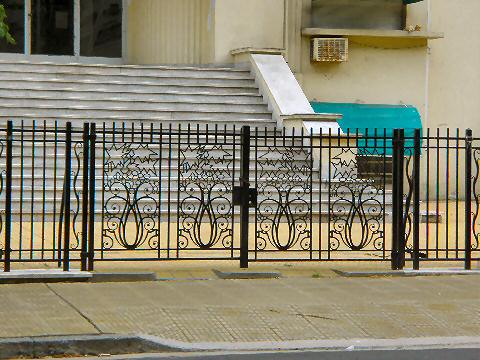
Though not actually along 15 de noviembre de 1889, this art deco gate on the neighboring Hospital Sarda, a maternity hospital, caught my eye.
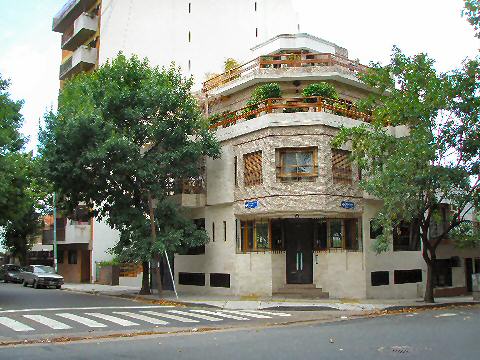
Beginning at the corner of Catamarca with this lovely home with garden terraces, a slightly larger but fairly typical home for the first four block stretch.
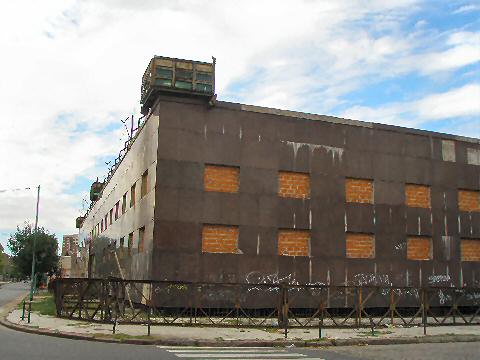
The Caseros Prison, the main structure already demolished, with just the surrounding low level structure still standing.
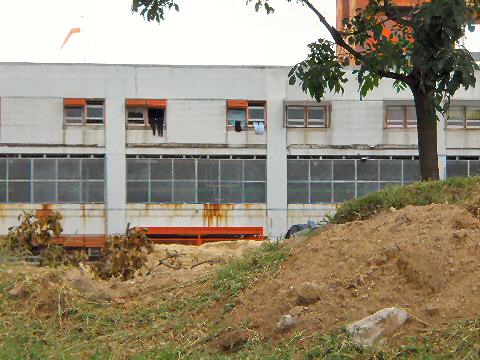
The unfortunately most visible wing, at least from this side, of the Hospital Garraham, a pediatric hospital – it wasn’t until I saw people and ambulances coming and going from various driveways that I realized it was actually still an active hospital and not an abandoned one with squatters.
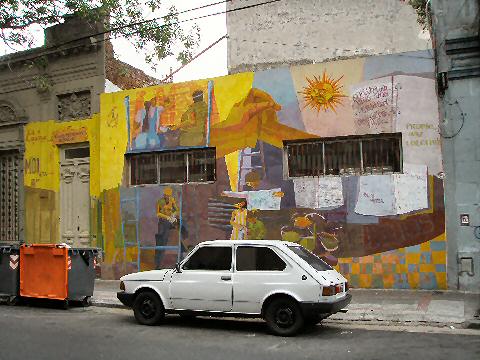
As I headed into Barrio Constitución, the neighborhood takes a turn, poorer, but in some ways, more colorful. Nothing really to say about these buildings, they’re just amongst the ones that caught my eye.
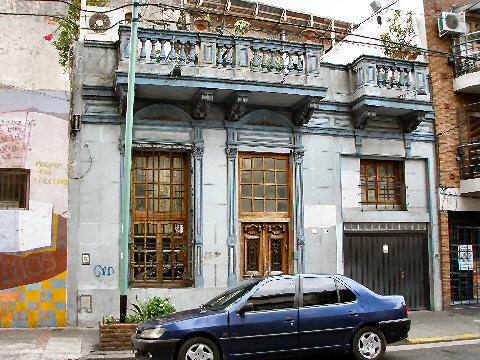
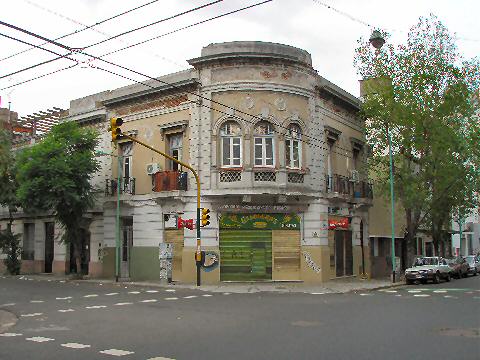
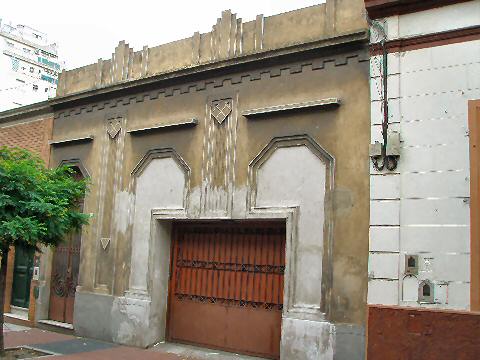
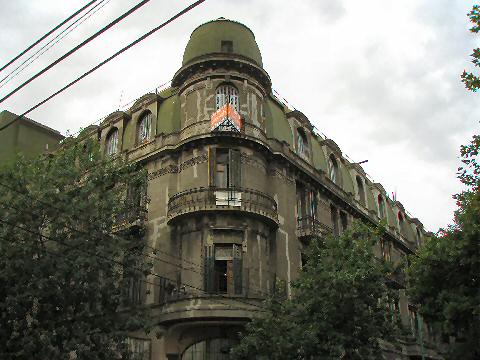
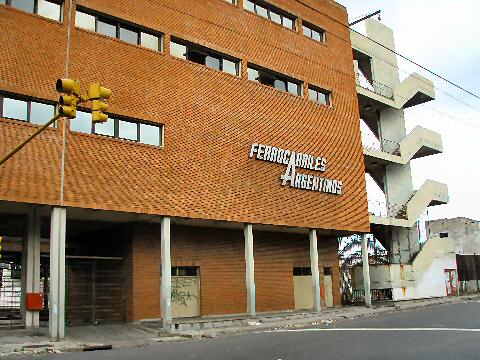
And, the street ends at the back, or the offices anyway, of the Constitución train station.
It is worth noting that the Brazilian Monarchy was toppled by a coalition of slaveholding landlords who resented the abolition of slavery by the Regent, Crown Princess Isabel and power hungry militaries.
During the nearly fifty-year reign of Emperor Pedro II, Isabel’s father had carefully avoided directly attacking the institution of slavery permeating Brazil’s sixty-five year old constitutional monarchy. Dom Pedro had nudged, suggested, lead by personal example but consistently sidestepped direct unequivocal political intervention against the slavery he personally abhorred. Even his cautious maneuverings toward abolition had ended in “lamentations and aggressive demonstrations” causing him to be derisively labelled as “the emperor of the Negroes and Indians”.
The newspaper Novidades angrily wrote in May 1888. “There is no one who does not see that the Princess Isabel is the one who is decreeing abolition; there is no one who does not perceive the large part she is playing… “. Many friends and foes agreed. Liberal abolitionist legislator Joaquim Nabuca left the legislative chambers during the debates over the proposed abolition law and “led a bravo to the Imperial Princess” to large waiting crowds.
Neither Emperor Dom Pedro II nor Crown Princess Isabel were able to save Brazil’s constitutional monarchy but by legally ending slavery within the legal guidelines of the existing government they validated and legitimized public support for the national governments that followed. They also presented a remarkable and unique political partnership that even during their lifetime was little understood, studied or appreciated.
[…] up on the other side of the hospital, the first building you run into is the backside of the Caseros Prison which I mentioned on one of my Paint by Numbers […]